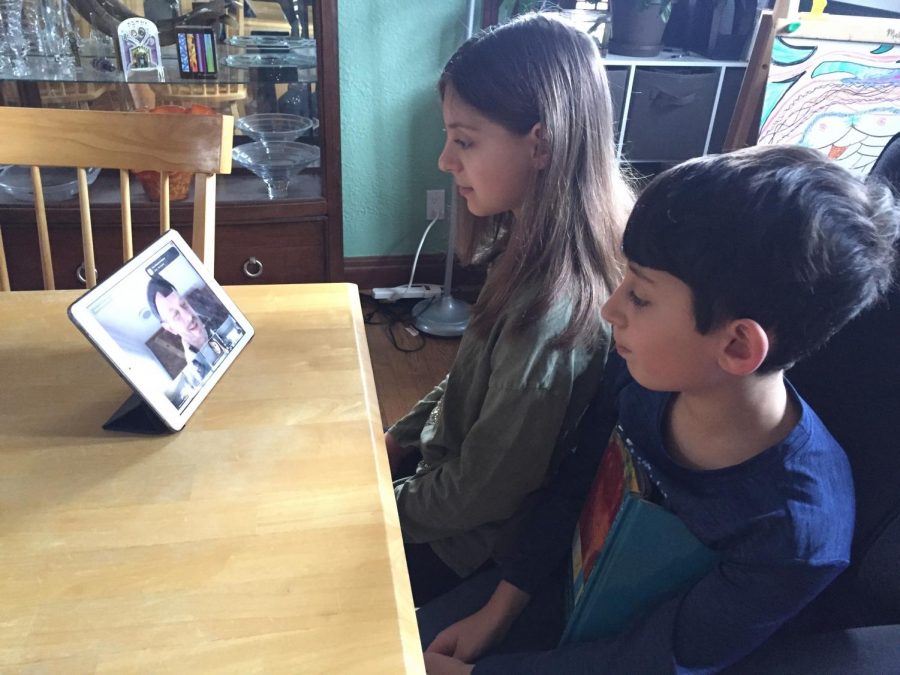Mirowitz students adjust to life online
Published March 26, 2020
Cheryl Maayan, the head of Saul Mirowitz Jewish Community School, has in recent weeks learned the difference between two words: synchronous and asynchronous.
“Synchronous learning is live-time when your class is with you; asynchronous learning is when students have choice over when they do the activity or view the class or view the video or do the work,” said Maayan, who is leading the Jewish day school as it adjusts to distance learning rather than being in its building on the Congregation B’nai Amoona campus.
The goal is to follow the “recommended combination” of synchronous and asynchronous learning, Maayan said.
On Monday, Tuesday and Thursday, students at the kindergarten through eighth grade school begin the day at 8:30 a.m. with a virtual, collective tefillah (prayer) service over Zoom video conferencing.
“The whole school dials in, and Rabbi Scott Slarskey, we call him Reb Scott here, … leads our services. And the kids, to see their faces, they are so excited to see each other and feel less isolated and to hear the prayers —it’s familiar, it’s healing, it’s very sort of, intangibly calming,” Maayan said.
Students then begin working through individual assignments while also logging into group sessions at set times.
“It’s not the same as being at school, but I think it’s cool how the internet can hold all the information that is getting typed right now,” said Gabriel Wax, a third grader. “I think the most challenging part is having questions and having to figure them out on my own and trying to slow down because usually at school, you have 45 minutes to do this, you have 20 minutes to do that. Now it’s really like a free-for-all, and you do stuff whenever you want. A couple days ago, I finished all my school work in an hour. It’s kind of hard for me to slow down.”
Meanwhile his sister, Eliana, a fifth grader at the school, has been enjoying a fantasy writing unit. The class has started an online book club in which students can choose between reading “Harry Potter” or “A Wrinkle in Time.”
The teacher has asked students to identify what elements make up a fantasy story and then to not only write their own story but to also draw it out.
“We are trying to do it in ways where we can do it for ourselves and figure it out — the teachers obviously can’t read our minds and answer our questions,” Eliana said. “I’m not someone who is super good with technology and stuff, so it’s been a little difficult with some of the websites we’re using.” But on Monday, her class started using Google Classroom, so Eliana can now ask her teacher questions there or reach her friends on Messenger Kids, a Facebook app for children, and get an answer “within minutes,” she said.
Before the pandemic, Jessica and Jeff Wax had not allowed their children to use Messenger Kids because “we weren’t huge fans of our kids being on technology that much,” said Jessica, an associate in Women’s Philanthropy at Jewish Federation of St. Louis. “But now, that’s kind of a lifeline for our kids to be connected to their friends.”















